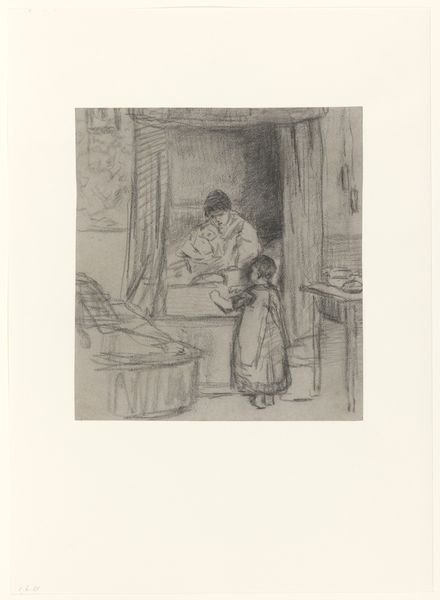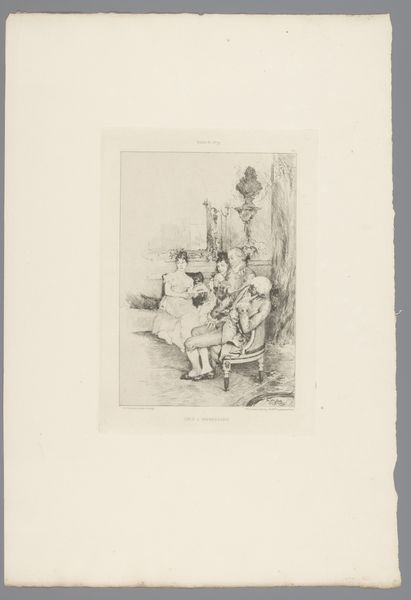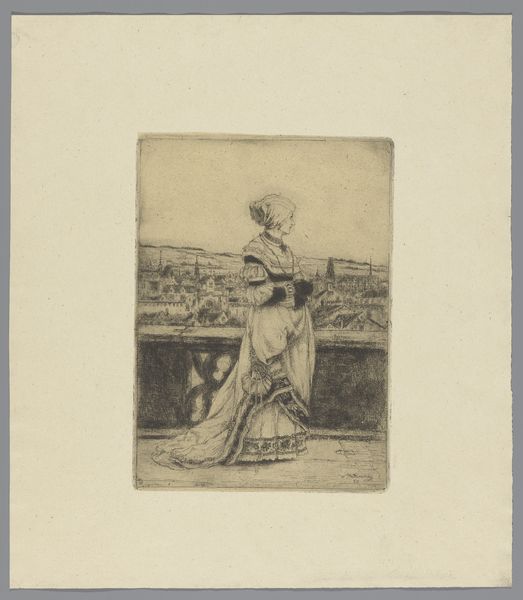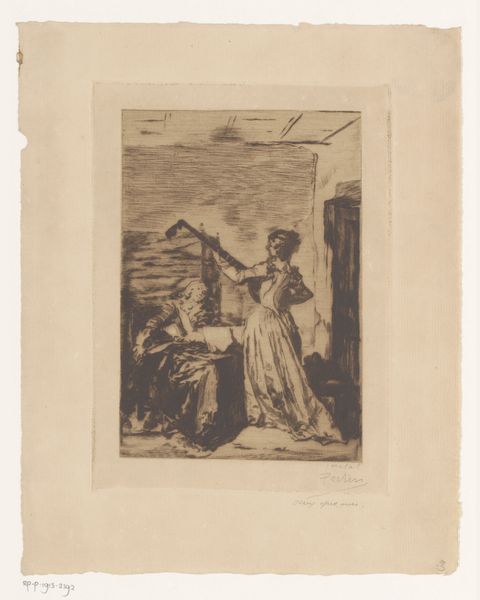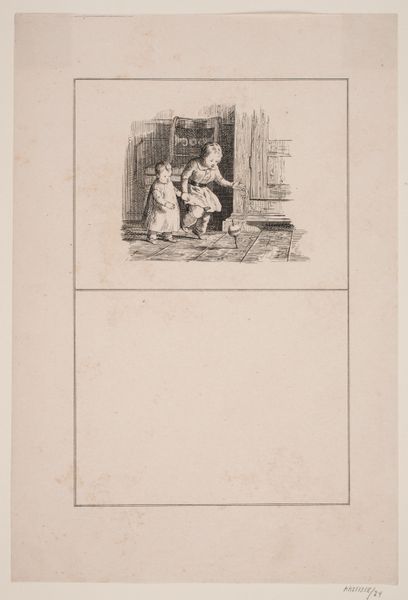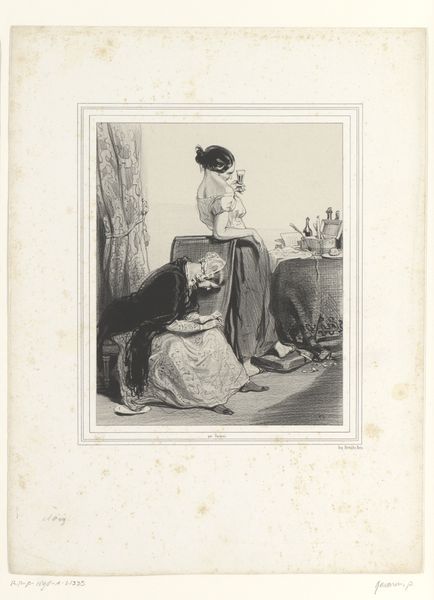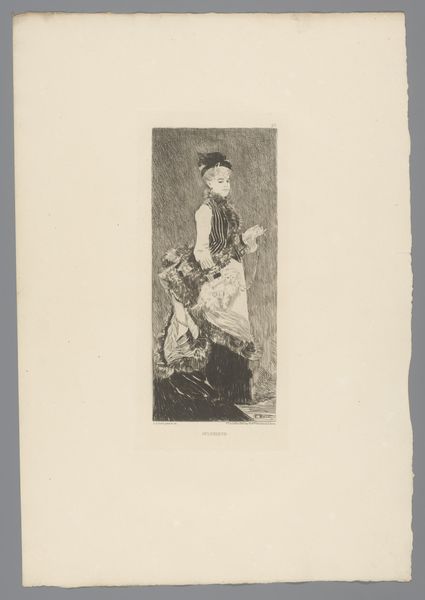
drawing, paper, ink
#
portrait
#
drawing
#
figuration
#
paper
#
ink
#
child
#
line
#
genre-painting
Dimensions: height 195 mm, width 192 mm
Copyright: Rijks Museum: Open Domain
Editor: This is "Moeder met kind, kijkend naar een zeilschip", or "Mother and Child Looking at a Sailing Ship", a drawing made with ink on paper sometime between 1861 and 1935, currently residing in the Rijksmuseum. The use of simple materials gives it a sense of everyday life, but there's something about the woman's patterned dress that stands out to me. What catches your eye in this work? Curator: The dress speaks volumes. Its intricate pattern, rendered painstakingly by hand, highlights the labor involved in its production, especially contrasted with the rougher lines depicting the child and the ship. Consider where the fabric was sourced, who wove it, who tailored the garment, and under what conditions. The image invites questions about the global network of trade and labor behind even a seemingly simple piece of clothing. Editor: So you’re saying it's less about the sentimental scene and more about the economic factors at play? Curator: Exactly. This image becomes a window into the material conditions of the time. Was the dress mass-produced or bespoke? The ink itself—where did it originate, and what social and technological processes enabled its creation? Every element, down to the paper, tells a story of resource extraction, manufacturing, and consumption. Think of it not as a sweet family moment but as an index of industrial and economic activity. How does shifting your perspective change your experience of the artwork? Editor: I see what you mean! Looking at it that way, the simplicity of the drawing makes it even more impactful, since it emphasizes those underlying material connections. The mundane scene almost tricks us into overlooking the global industry implied in those details. Curator: Precisely. It's a potent reminder that even the most domestic scenes are deeply embedded within larger economic and material realities. Now, when you look at other works, will you consider them differently? Editor: Definitely. I'll be paying closer attention to the "how" and "where" behind the art we see. Thank you.
Comments
No comments
Be the first to comment and join the conversation on the ultimate creative platform.

